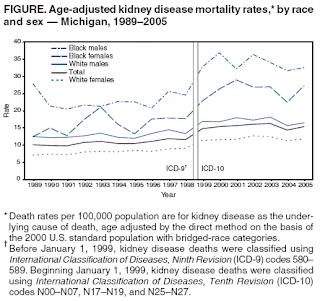In two new studies, sociologists reveal racial disparities in welfare sanctions and explore welfare use among Mexican Americans
WASHINGTON, DC — African Americans are significantly more likely to be sanctioned by the United States welfare system than whites, according to research published in the June issue of the American Sociological Review, the flagship journal of the American Sociological Association.
In a study led by sociologist Sanford F. Schram, a team of researchers conducted a multi-pronged analysis to determine how and why race influences sanctioning under welfare reform in the United States. The study combined real-life data from the Florida Welfare Transition program and experimental data from a survey in which case workers were asked to make sanctioning decisions based on hypothetical scenarios.

Sanford Schram teaches social theory and social policy in the Graduate School of Social Work and Social Research at Bryn Mawr College.
Office: Room 212, Graduate School of Social Work and Social Research, Bryn Mawr College 300 Airdale Rd. Bryn Mawr PA 19010-1697. Hours: Th 10-11:30 am or by appointment. Phone: 610-520-2622, Fax: 610-520-2655. Email: sschram@brynmawr.edu | "Welfare sanctions should be imposed in response to client behavior in both law and principle, yet this research indicates that in practice, sanctions are often used in response to client characteristics," said Sanford F. Schram, a professor of social theory and policy at Bryn Mawr College's Graduate School of Social Work and Social Research. "This study provides powerful evidence that race and stereotype-consistent traits interact to shape the allocation of punishment at the frontlines of welfare reform."
Findings from experimental and administrative data both supported the vulnerability of African Americans to welfare sanctions, especially when a recipient had a history of one or more sanctions. |
According to experimental data, black welfare clients with a prior sanction were 29 percent more likely to be sanctioned than previously-sanctioned whites, and 45 percent more likely to be sanctioned than whites without a prior sanction. In the administrative data, the risk of a first-time sanction was 14 percent higher for African Americans than for white clients. When there were prior sanctions, the risk doubled to 28 percent for blacks compared to whites who had no sanction history.
"White clients in these experiments suffered no statistically discernible negative effects when linked to characteristics that hold negative meanings in the welfare-to-work context," Schram said. "Minority clients, however, enjoyed no such immunity: their odds of being sanctioned increased in the presence of discrediting markers even when the details of their case did not change a bit."
Despite identical situations posed to welfare case workers in experimental surveys, a pregnant Hispanic with four children was significantly more likely to be sanctioned than a white client with only one child. Although results differed in a similar analysis of administrative data, the lack of consistency between the two data sets confirms previous research that demonstrated a narrower gap between Hispanic and white stereotypes than between black and white stereotypes.
Experimental data for this study came from a Web-based survey completed during a two-week period at the end of 2006 by 144 case managers with the Florida Welfare Transition program. Case managers were presented with realistic rule-violation scenarios in which key client characteristics were randomly assigned. Case managers then were asked if they would impose a sanction in response to the scenario. The hypothetical scenarios randomized the client's race (white, African American or Hispanic) and the client's personal situation. In one scenario, the client was a young mother of multiple children and in another she was a repeat welfare recipient with a history of sanctions.
Experimental data were analyzed in conjunction with real-world administrative data from the Florida Department of Children and Families. The data set included monthly, individual-level records for those who received Temporary Assistance for Needy Families (TANF) between January 2000 and April 2004. In an effort to match the scenarios provided in the experimental survey as closely as possible, records were analyzed based on the joint effects of (1) ethnicity and family size and (2) the joint effects of racial status and sanction history. The total administrative sample included more than 6,000 women and nearly 20,000 monthly observation records of participants.
Schram's co-authors for this study included Joe Soss, Cowles Professor for the Study of Public Service at the University of Minnesota, Richard C. Fording, Professor of Political Science at the University of Kentucky, and Linda Houser, a doctoral candidate at Bryn Mawr College.
Immigrants and Welfare
In another study to examine welfare in the context of demographic groups in the June issue of the American Sociological Review, sociologists Jennifer Van Hook and Frank D. Bean found that, prior to welfare reform, Mexican immigrants were more likely than other groups to transition from welfare to work, particularly in states that provided more generous welfare benefits.
"This research refutes welfare reform assumptions that immigrants and disadvantaged native citizens seek out and maintain welfare assistance for the same reasons," said Jennifer Van Hook, associate professor of sociology and demography at the Pennsylvania State University. "In the case of Mexican immigrants, welfare seems to be used primarily to minimize the effects of gaps in employment, not to avoid work or perpetuate dependency."
Among women who reported receiving Aid to Families with Dependent Children (AFDC, the pre-welfare reform version of TANF), Mexican immigrants were significantly more likely to exit welfare within one year (57.7 percent) than were white (37.9 percent) or black (36.4 percent) natives.
Using samples of 4,071 racially diverse immigrant women and 9,265 white or black native women from the Survey of Income and Program Participation (SIPP), Van Hook and Bean analyzed longitudinal data from the 1990 through 1993 annual SIPP panels. The researchers chose to analyze pre-welfare reform data due to the lack of special restrictions related to migration status on the welfare eligibility of legal immigrants. The Personal Responsibility and Work Opportunity Reconciliation Act (Welfare Reform Act) of 1996 barred legal immigrants entering the United States after August 22, 1996, from receiving assistance for the first five years after entry.
The research underscores the importance of taking cultural considerations into account in explaining immigrant welfare behaviors. Van Hook and Bean attribute the lower rates of welfare receipt and higher rates of post-welfare employment of Mexican immigrant women to the strong pro-employment cultural orientation among these immigrants.
"Our research suggests that the strong involvement of work and family in the Mexican decision to migrate leads to the prioritization of employment well after migration, minimizing welfare receipt and increasing post-welfare employment," Van Hook said. "Further, immigrant public assistance may in fact have a positive effect on integration, helping immigrants to work their way out of poverty and off welfare."
Welfare reform is not likely to deter future Mexican immigration, according to Van Hook and Bean, if policymakers are indeed misguided in assuming that immigrants are drawn to the United States by welfare, or that immigrants assimilate into welfare. Instead, welfare reform actually may delay economic incorporation, particularly if no other form of economic settlement assistance is available to immigrants experiencing conditions of great economic need. ###
The research articles "Deciding to Discipline: Race, Choice and Punishment at the Frontlines of Welfare Reform" and "Explaining Mexican Immigrant Welfare Behaviors: The Importance of Employment-Related Cultural Repertoires" as well as author interviews are available by request for members of the media. Contact Jackie Cooper, ASA's Media Relations Officer, at
pubinfo@asanet.org or (202) 247-9871.
About the American Sociological Association
The American Sociological Association (
www.asanet.org), founded in 1905, is a non-profit membership association dedicated to serving sociologists in their work, advancing sociology as a science and profession, and promoting the contributions to and use of sociology by society.
Contact: Jackie Cooper
pubinfo@asanet.org 202-247-9871
American Sociological Association


































